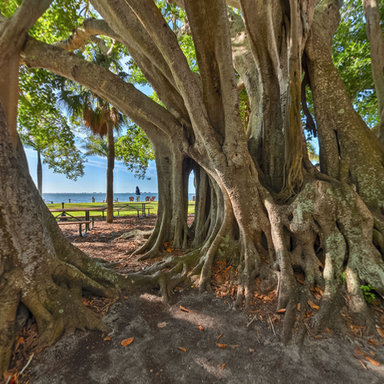Banyan
Upside down, downside up,
this ancient banyan
is home to leathery shadows
and green, glossy shine.
The branches twist
up, down, and through
like bronze fingers
always in search
of something to hold.
Their hunger is immense—
wild birds sound
like children playing.
And the banyan’s
spindle fingers
creak in response,
knuckles popping
like the slow drying
of paint on an old,
tired canvas.
Bonus Material:
Banyans are the national tree of both India and Bangladesh.
A banyan is a kind of fig tree, though its fruits aren’t safe to eat.
Fig wasps and fruit-eating birds help disperse the banyan’s seeds.
The banyan is an epiphyte—a plant/tree that often grows on a host plant/tree without killing it. It can also grow on other structures, such as bridges or buildings.
Banyans are sometimes called “strangler figs” because of the way the aerial prop roots seem to grab hold of other trees, plants, and structures.
The Ringling Museum has 14 banyans on its property—some of which were around in the times of John and Mabel Ringling (1920s).
